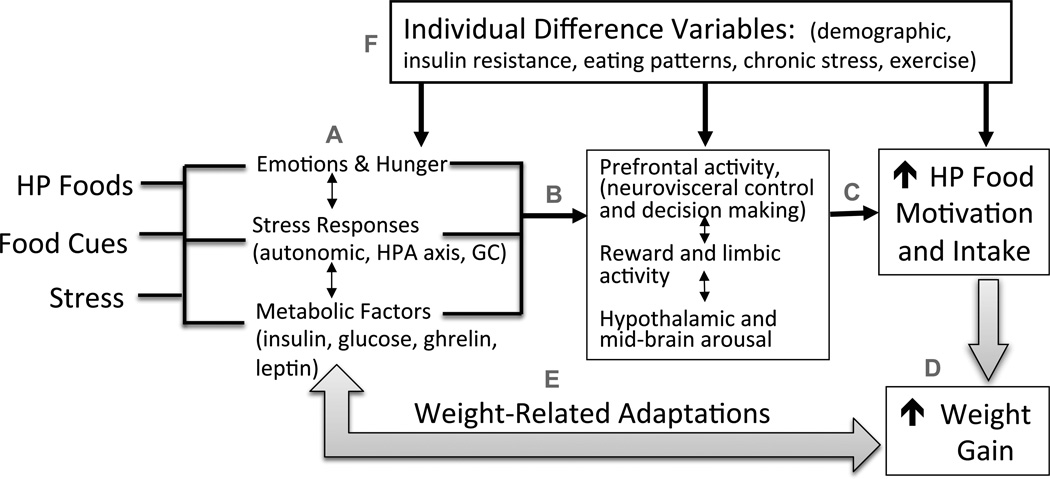Figure 4.
A heuristic model is proposed of how HP foods, food cues and stress exposure may increase subjective (emotions, hunger) and also activate metabolic, stress and motivation systems in the brain and body to promote HP food motivation and intake (A). Stress-responsive hormones (ACTH, cortisol) and metabolic factors (insulin, ghrelin, leptin) influence brain limbic and striatal reward regions (emotion and signaling) to influence dopaminergic signaling, activate hypothalamic and midbrain arousal regions and prefrontal cortical circuits involved in reward prediction, self control and decision making (B). With weight-related adaptations in metabolic, neuroendocrine and subjective/behavioral responses, a vulnerable individual becomes highly susceptible to food cues-related and stress-related HP food craving which predicts HP food intake in these susceptible individuals (C). Such a sensitized process with increased HP food motivation and intake would in turn also promote weight gain (D), thereby potentiating the cycle of weight-related adaptations in stress and metabolic pathways (E), and increased sensitization of brain motivation pathways, to promote HP food motivation and intake, especially under conditions of food cue or stress exposure. Individual differences variables may further moderate these relationships as shown in F.

